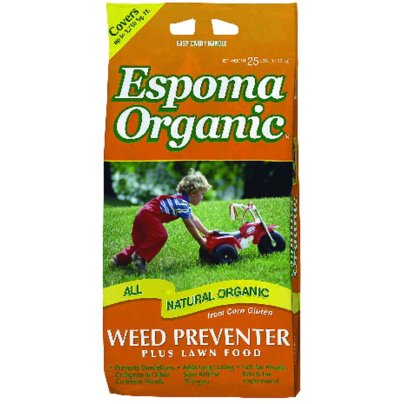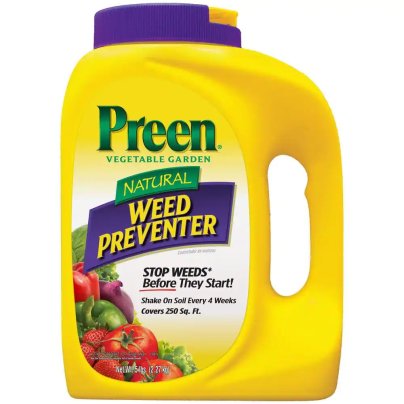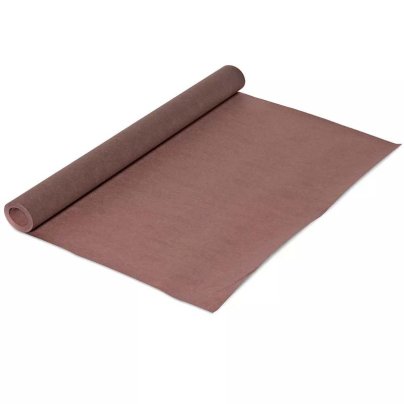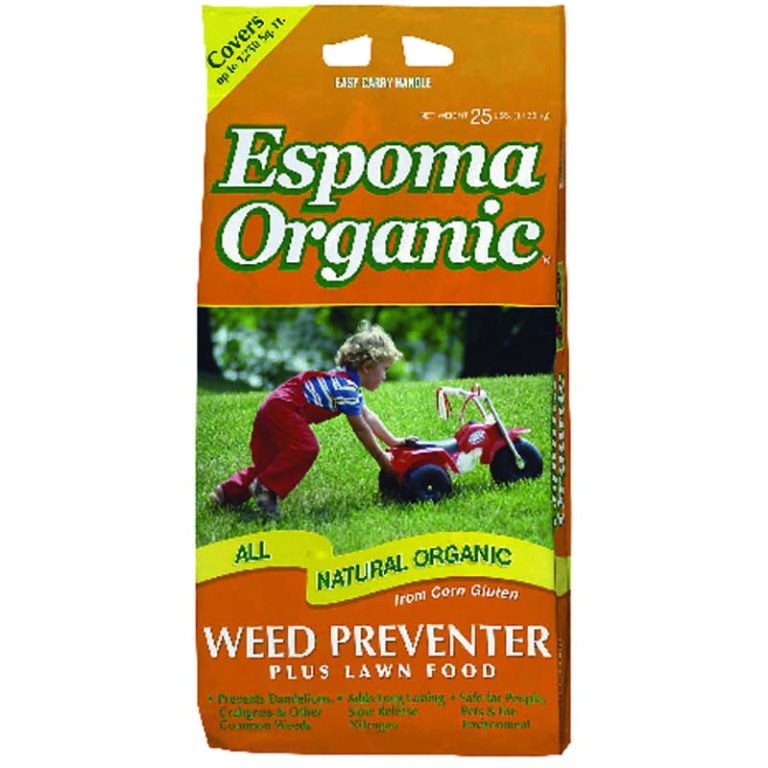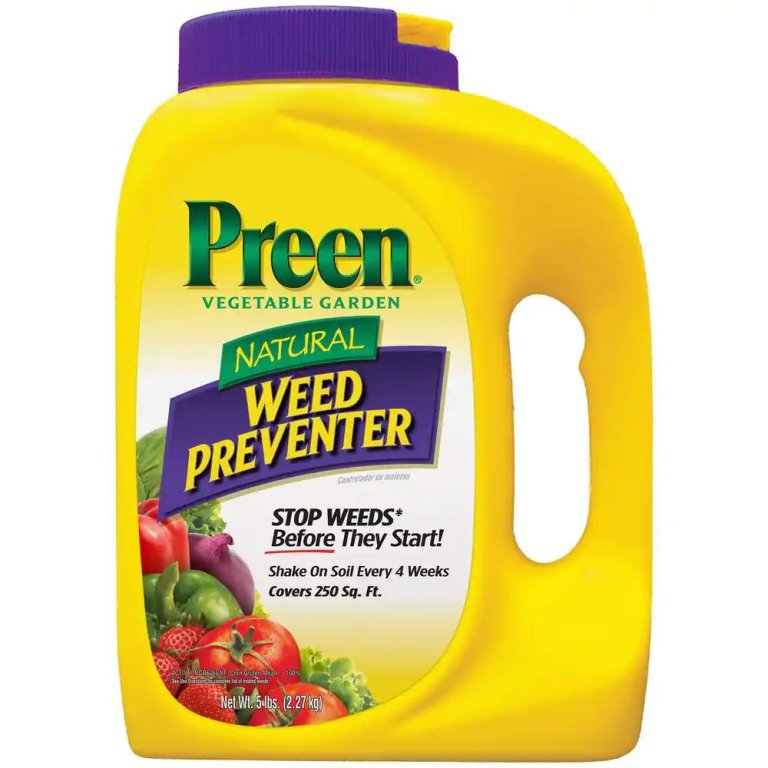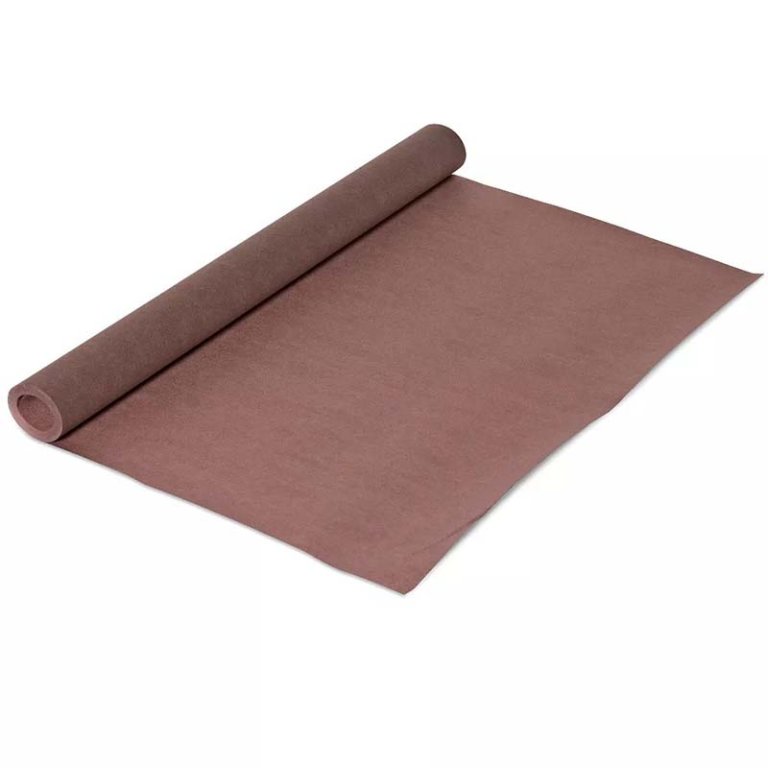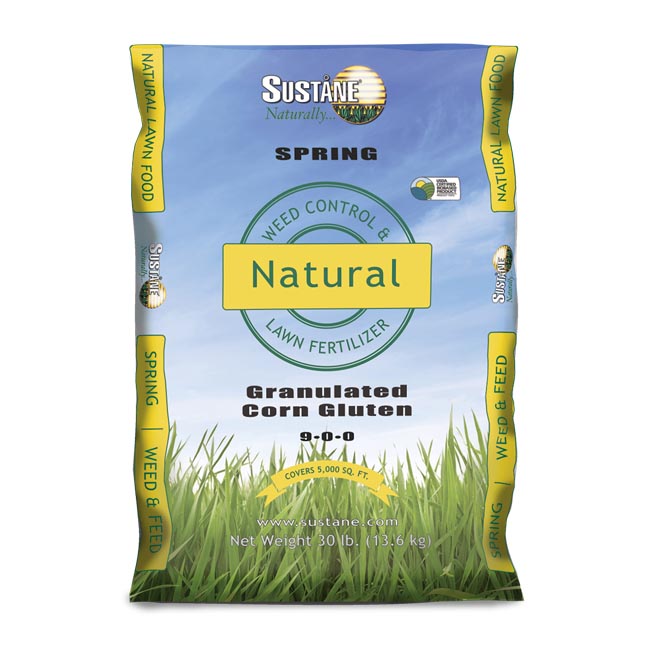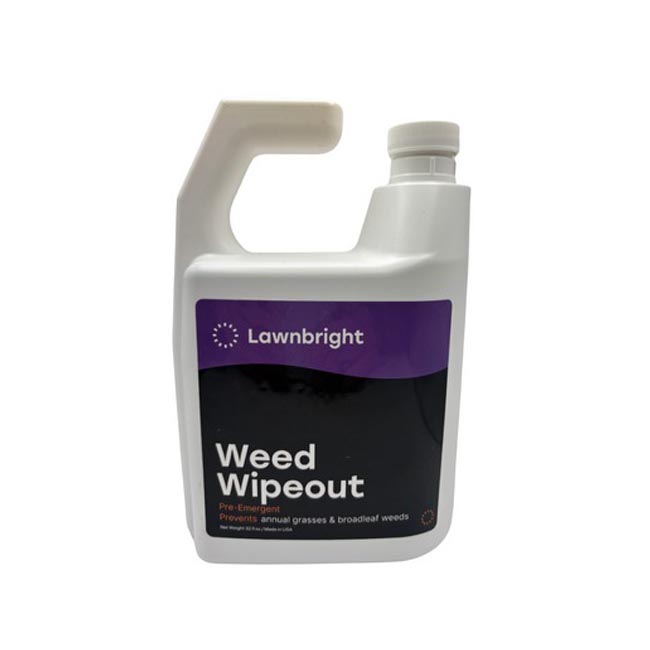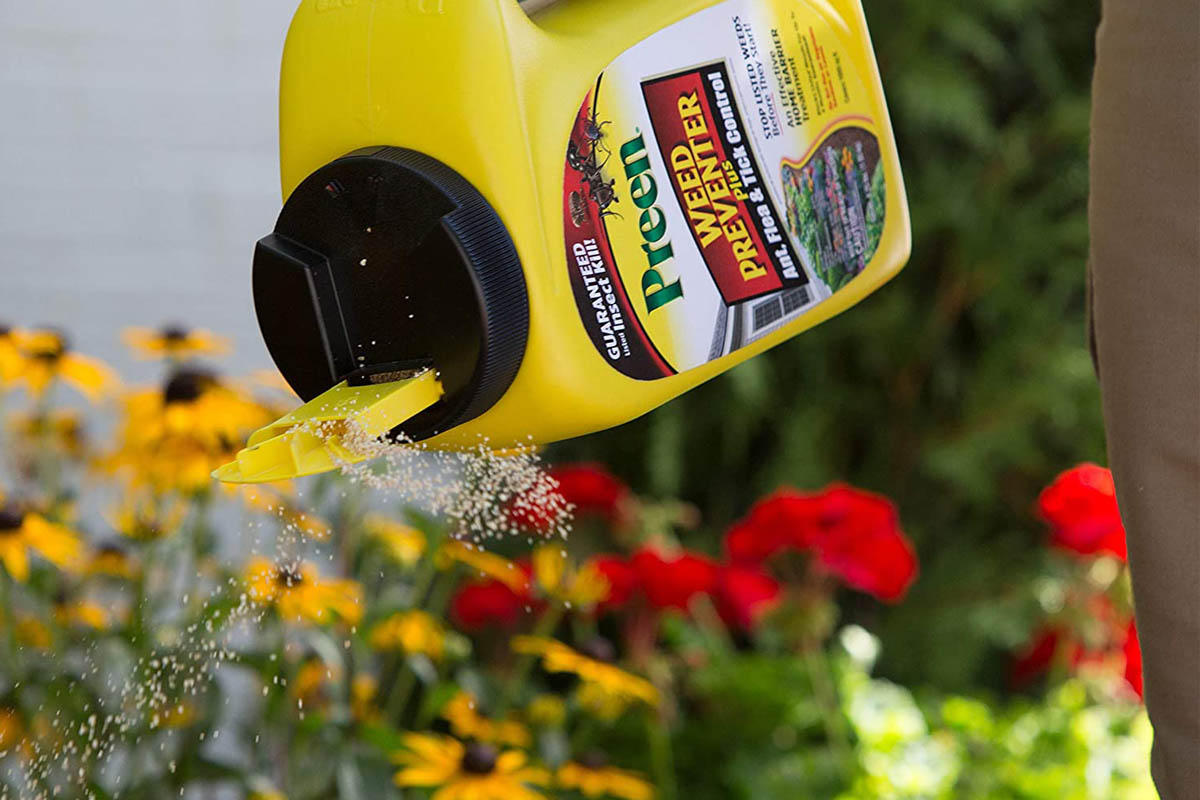
We may earn revenue from the products available on this page and participate in affiliate programs. Learn More ›
Stopping weeds early—before they can emerge from the soil—is the goal when applying a pre-emergent herbicide. A pre-emergent herbicide prevents the sprouting of undesirable weed seeds, so it’s a beneficial lawn care partner in the war against weeds in grass, flower beds, and even vegetable gardens.
We spent hours researching pre-emergent herbicides and testing a select few. We looked for the cream of the crop—products that can prevent weeds without utilizing potentially dangerous chemicals. Our favorite is Espoma Organic Weed Preventer. It’s made from 100% organic corn gluten meal, making it safe for children and pets to be around. Plus, it works in lawns, vegetable gardens, and flower beds.
The right pre-emergent herbicide product for you will depend on the size of the area requiring treatment and the type of weeds you need to kill. This guide points out what to look for when shopping for a weed preventer and provides a list of some of the best pre-emergent herbicides on the market.
- BEST OVERALL: Espoma Organic Weed Preventer
↓ Jump to Review - BEST BANG FOR THE BUCK: Preen Natural Vegetable Garden Weed Preventer
↓ Jump to Review - BEST FOR FLOWER BEDS: Gardener’s Supply Company Weedguard Plus Paper Mulch
↓ Jump to Review - BEST WITH FERTILIZER: Sustane Spring Weed and Feed Corn Gluten
↓ Jump to Review - BEST EASE OF USE: Lawnbright Organic Pre-Emergent Weed Control
↓ Jump to Review

Before You Buy Pre-Emergent Herbicide
Pre-emergent herbicides create a barrier that prevents weed seeds from sprouting. Because they stop roots from forming, pre-emergents are an effective way to control weeds, but they aren’t necessarily the right product for every type of lawn weed, including broadleaf and grassy weeds.
A pre-emergent herbicide will prevent weed seeds from germinating dandelions and crabgrass, for example, but it won’t kill the plant once it’s established. When broadleaf weeds are mature, they’re tougher to get rid of. A targeted product such as dandelion killer may work best in this instance.
Some pre-emergent herbicides are fairly specific about the weeds they target. But others will kill almost any seed and aren’t a good choice for recently sowed flower borders, vegetable beds, or newly seeded lawns. Regarding ingredients, choosing sustainable, environmentally friendly options that won’t pose health risks or damage the soil is always the best bet.
Pre-Emergent Herbicides Comparison Chart
| Type | Quantity | Coverage | |
| Espoma Organic Weed Preventer | Granules | 25 pounds | 1,250 to 2,500 square feet |
| Preen Natural Vegetable Garden Weed Preventer | Pre-emergent corn gluten | 5 pounds | 250 square feet |
| Gardener’s Supply Company Weedguard Plus Paper Mulch | Paper mulch : | Roll, 50 feet long by 3 feet wide | 150 square feet |
| Sustane Spring Weed and Feed Corn Gluten | Granules | 30 pounds | 1,500 square feet (weed control); 5,000 square feet (lawn fertilizer) |
| Lawnbright Organic Pre-Emergent Weed Control | Liquid | 32 fluid ounces | 1,500 square feet |
Our Top Picks
The best pre-emergent herbicides are safe, sustainable, prevent a variety of weeds from sprouting, and offer easy-to-follow instructions. All of the following products will reduce hand weeding and help avoid the need for additional post-emergent treatment of weeds.
Best Overall
Espoma Organic Weed Preventer
What We Like
- Organic pre-emergent herbicide formula
- Safe for use around children and pets
- Prevents an extensive range of weeds from germinating
- Works on vegetable plots, flower beds, and lawns
What We Don’t Like
- May emit an unpleasant smell when damp
- May attract flies
Product Specs
- Type: Granules
- Quantity: 25 pounds
- Coverage: 1,250 to 2,500 square feet
Espoma Organic has been creating organic garden products since 1929. Few brands have more experience in this market. Its granular pre-emergent herbicide is made from corn gluten, with natural nitrogen to help feed lawns and established plants.
It is applied twice a year in the same manner as synthetic pre-emergent herbicides, so those switching up to sustainable practices will find it easy to use. The 25-pound bag will typically cover 1,250 square feet but can cover 2,500 square feet if it’s simply used as lawn feed. It should not be applied on newly seeded or overseeded lawns for weed control but is fine for established vegetable plants, flowers, and shrubs.
We have seen a small number of reports of the product giving off an unpleasant smell and attracting flies when damp, but this may be caused by incorrect storage or application.
What our tester says: Stacey L. Nash, a Bob Vila staff writer and product tester, notes in the Best Weed and Feed that “Espoma can help prevent pre-emergent weeds, but not those already growing. … We didn’t have to worry about children or pets walking on that lawn while the granules were still visible. We also appreciated that it can safely be used on flowers and vegetable gardens.”
Get the Espoma pre-emergent herbicide at Ace Hardware, True Value, or Walmart.
Best Bang for the Buck
Preen Natural Vegetable Garden Weed Preventer
What We Like
- Prevents weeds while still feeding plants
- Easy-to-apply shaker lid for added convenience
- Lasts for up to 3 months after application
What We Don’t Like
- Won’t kill any existing weeds
- Stops all types of seeds from sprouting
Product Specs
- Type: Pre-emergent corn gluten
- Quantity: 5 pounds
- Coverage: 250 square feet
Like all Preen weed preventers, this pre-emergent product stops weed seeds from sprouting, but this one is entirely natural. It contains only corn gluten, which is known for preventing seed germination. This Preen granular weed preventer can be used in flower beds and around other types of plants—including fruits and vegetables.
We like that Preen weed preventer is a natural product that comes in granular form and is easy to apply with the built-in shaker lid for fuss-free, uniform application. A single application will keep weed seeds from sprouting for 4 to 6 weeks. It can be used on bare soil or in conjunction with mulch, such as shredded bark or pea gravel. It should only be used where plants are already established. Seeds of desirable plants will not sprout if sown in soil that’s been treated with corn gluten until the granules biodegrade to the extent that they no longer act as a barrier to seed germination.
What our tester says: Debbie Wolfe, a Bob Vila staff writer and product tester, notes in the Best Weed Killers for Flower Beds that “In my test, I applied [Preen Natural Weed Preventer] to my vegetable garden before adding transplant seedlings. My plants were fine, and new weeds did not sprout.”
Get the Preen pre-emergent herbicide at Amazon, Lowes, The Home Depot, Ace Hardware, Tractor Supply Co., or Blain’s Farm & Fleet.
Best for Flower Beds
Gardener's Supply Company Weedguard Plus Paper Mulch
What We Like
- Made from certified organic wood pulp
- Safe for use around children and pets
- Retains moisture, conserving water for desirable plants
- Highly biodegradable construction
What We Don’t Like
- Only lasts 1 season; must be reapplied yearly
Product Specs
- Type: Paper mulch
- Quantity: Roll, 50 feet long by 3 feet wide
- Coverage: 150 square feet
The approach adopted by the Gardener’s Supply Company is not to use a herbicide at all, but to use a paper sheet made from natural wood pulp. This doesn’t actually stop germination but prevents light from getting to weeds, effectively smothering growth.
Weedguard Plus can be laid over unplanted areas and around existing plants. It’s easy to cut or pierce, so new plants can be inserted through it. It makes it an ideal solution when creating flower borders, vegetable gardens, or plots using seedlings. The paper reduces evaporation, keeping the soil moist for longer and reducing the need to water.
A major upside of using paper mulch is that it degrades during the growing season, adding useful fiber and nutrients to the soil. The downside is that when the new season rolls around, the paper has to be relaid, or another herbicide needs to be used.
Get the Gardener’s Supply Company pre-emergent herbicide at Gardener’s Supply Company or Amazon.
Best with Fertilizer
Sustane Spring Weed and Feed Corn Gluten
What We Like
- Fertilizer with pre-emergent herbicide; contains slow-release nitrogen
- Targets pesky broadleaf weeds
- OMRI certified for sustainability and reliability
- Safe for use around children, pets, and wildlife
What We Don’t Like
- Provides less coverage than similar products
Product Specs
- Type: Granules
- Quantity: 30 pounds
- Coverage: 1,500 square feet (weed control); 5,000 square feet (lawn fertilizer)
Sustane Spring Weed and Feed is a corn gluten-based pre-emergent weed killer and fertilizer certified as organic by the Organic Materials Review Institute (OMRI). While it will provide some general protection, it specifically targets those broadleaf weeds that are particularly difficult to deal with once established.
Like many natural herbicides, Sustane contains a small amount of nitrogen—9 percent in slow-release format. This is excellent as a lawn food and for border planting. When used as a lawn fertilizer, a 30-pound bag will cover 5,000 square feet. But for weed control, the same bag only covers 1,500 square feet. Used as a pre-emergent herbicide, Sustane only needs to be applied once a year and is safe for children and pets.
Get the Sustane pre-emergent herbicide at Walmart or Arbico Organics.
Best Ease of Use
Lawnbright Organic Pre-Emergent Weed Control
What We Like
- Ready-for-use spray bottle
- USDA National Organic Program–compliant
- Comes in many different sizes/quantities
What We Don’t Like
- Concentrate is not child- and pet-safe
- May irritate the skin and eyes if exposed
Product Specs
- Type: Liquid
- Quantity: 32 fluid ounces
- Coverage: 1,500 square feet
Most pre-emergent herbicides either come as granules, which are best applied with a spreader, or as liquids that need to be diluted and applied with a sprayer. This often involves an extra expense to buy the necessary equipment. With Lawnbright liquid pre-emergent herbicide, all that’s required is a garden hose, which simply connects to the included pre-emergent spray attachment.
We appreciate that Lawnbright weed control comes ready to use. It’s made from corn gluten, and in addition to being nontoxic, it also complies with the USDA National Organic Program. However, despite claiming to be safer than “traditional” pre-emergent herbicides, Lawnbright’s product label warns that it should be kept out of the reach of children and that it can irritate skin and eyes.
Get the Lawnbright pre-emergent herbicide at Lawnbright.
Or, DIY Your Own Pre-Emergent Herbicide
Corn gluten meal is found in many commercially available organic herbicides, but it’s also possible to buy it from garden nurseries and farm feed stores or online to make your own weed preventer. Applying corn gluten meal is done much like a granular pre-emergent herbicide. Simply sprinkle it over the lawn at a rate of around 20 pounds per 1,000 square feet and water it in.
Cornmeal (the difference in the name is small but important) can also be used, but this option isn’t as effective. Where corn gluten meal can be applied in early spring and fall, cornmeal should also be applied during the midsummer months.
A 50 percent saltwater solution is sometimes suggested as a natural pre-emergent and can prove effective at controlling weeds if applied regularly. However, nothing else will grow in soil treated with it. That’s why this natural pre-emergent is more appropriate for paths and driveways and can be used as a weed killer for gravel. It should always be sprayed judiciously (never oversprayed) to avoid endangering flowers and other desirable plants.
Our Verdict
An established market leader, the Espoma pre-emergent herbicide is our choice for the best pre-emergent herbicide. Popular lawn and garden options like Quali-Pro Prodiamine, Preen Weed Preventer, and Scotts Turf Builder weren’t listed because they didn’t meet our sustainability guidelines—each contain harmful synthetic ingredients.
Jump to Our Top Picks
How We Chose the Best Pre-Emergent Herbicides
We looked at the various types of pre-emergent herbicides on the market to determine our top picks, each of which is suited to specific shoppers looking for a particular characteristic for their yard.
While our research did find that there are two types of herbicides available—liquid and granules—we found that granules were more effective at providing long-lasting weed prevention. Many traditional liquid options are prone to overspraying and can burn the affected areas. Fortunately, most organic liquids are far kinder to both plants and people, so while compiling our list of recommendations, we were able to find a variety of different products that prevent weeds.
As with any of the household or garden chemicals we investigate, sustainability is a key part of our selection process. It remains a challenge to find proven organic pre-emergent herbicides, though during our research, we discovered a variety of solutions that satisfy many organic principles.
What to Consider When Choosing a Pre-Emergent Herbicide
Shoppers will want to be careful about choosing a pre-emergent herbicide. Some shouldn’t be applied on soil where seeds will be planted to start a flower or vegetable garden, for example, or on a seeded lawn.
Also, effective pre-emergent herbicide options vary in form, strength, and in the type of ingredients they contain. We prefer organic varieties but acknowledge that many popular commercial herbicides contain toxins. There are risks involved in using synthetic products. Many commercial pre-emergents are labeled “weed preventers,” but that doesn’t mean they’re less damaging than “herbicides” or “weed killers.” Shoppers will want to take care to always read label instructions for safe use and disposal.
Form
Pre-emergent herbicides are available in two primary forms: liquid and granules. While they both prevent weeds from emerging, groundskeepers and gardeners may prefer applying one form over another. Either type will help reduce the need for manual weeding tools.
- Liquid: Available as either concentrated or full-strength for use in a pump-type sprayer, liquid pre-emergent herbicides are easy to apply and are well-suited for treating lawns to protect them from invasive grasses and other weeds. Concentrated liquids are the form of choice for many commercial applications, such as on golf courses and in parks.
- Granules: Granular pre-emergent herbicides resemble tiny grains and can be applied by a drop spreader, a broadcast spreader, or simply shaken out of a cup onto the soil to control weeds. The granules dissolve and seep into the soil after watering to form a weed-germination barrier. Some even pull double-duty, acting as a fertilizer and weed killer for lawn use.
Selectivity
Rather than targeting different types of plants the way many post-emergent herbicides do, pre-emergents target plants in different stages of growth. A pre-emergent will stop a seed from developing roots or a shoot, but it will not harm a larger plant’s roots, making them a good choice for getting rid of dandelions before they germinate.
Also, a pre-emergent herbicide will not kill the roots of perennial weeds, such as bindweed or witchweed, that may lie beneath the soil. They may also fail to prevent some types of brush weeds from growing. This can be a source of confusion for gardeners who see weeds emerging after the application of a pre-emergent herbicide. To eliminate perennial weeds, it’s best to wait until they emerge from the soil and then treat them directly with a post-emergent herbicide.
A pre-emergent herbicide can be a good weed killer for Bermuda grass and other types of turf grass, though, preventing clover, dandelions, and other weeds from overrunning the lawn.
Ingredients
Pre-emergent weed control products are broadly defined as either organic or synthetic.
- Organic: Almost all organic pre-emergent herbicides are corn-based. As an active ingredient, corn is effective against a variety of grassy weeds and also feeds the soil. Vinegar is an alternative but may have an unpleasant smell. Citric acid also works but is most beneficial for those who grow fruit trees.
- Synthetic: Active ingredients in synthetic pre-emergent herbicides include Benefin, Dithiopyr, Isoxaben, Prodiamine, Siduron, and Trifluralin among other toxic, harmful chemicals. These products may be selective herbicides that target a particular group of weeds or have a more general approach.
Increasing demand for more sustainable, environmentally friendly products has led many shoppers to seek safer, organic options. Our selection features products that follow guidelines set by the USDA’s National Organic Program and OMRI.
Longevity
Most users apply pre-emergent herbicides to form a barrier in the soil and stop weed seed germination. The average pre-emergent usually protects an area for 1 to 3 months, but some can protect a lawn or garden even longer. Many manufacturers recommend applying pre-emergent herbicide products in the spring at about the time forsythia blooms are beginning to fade and then applying again in early fall to prevent blown-in weed seeds from germinating. While the use of a pre-emergent may not stop all weeds from germinating, it will eliminate the majority of them, even if used only once a year.
Safety and Application
Whether synthetic or organic, applying a pre-emergent when children and pets are not around is the most important safety rule. Here are a few more.
- Read the label. Herbicides sold in the U.S. usually carry a warning label against improper use, as they can harm humans, wildlife, and the environment.
- Protect the body. Users should wear gloves, long sleeves, long pants, a dust mask, and eye protection during application to avoid direct contact.
- Apply on a calm day. Wind can carry herbicide spray, inadvertently contaminating an area intended for planting.
- Water after application. Watering encourages pre-emergents to seep into soil and form a barrier against seed germination.
- Wash afterward. Users should thoroughly wash and change clothes after application.
- Never pour unused synthetic herbicides down the drain or lavatory. This risks introducing toxins into the water supply. The local waste authority can offer disposal advice, particularly concerning concentrates.
FAQs
Reducing the number of weeds in a garden or flower bed is the goal of many gardeners, and applying a pre-emergent weed killer can help. Our informative guide addresses many issues and concerns shoppers usually have about buying and applying a pre-emergent, but sometimes additional questions remain. Here are answers to some of the most common ones.
No, a pre-emergent herbicide won’t kill established crabgrass, but it will stop the germination of new crabgrass seeds. Our article on how to get rid of crabgrass offers further advice.
For the best results, most pre-emergent herbicides should be applied at least once in the early spring and once in the fall. Check the product label for additional instructions.
Apply a pre-emergent herbicide in the spring when outdoor temperatures are still relatively cool—around the low 50s—before weed seeds begin to germinate.
Rain will actually help the pre-emergent herbicide seep into the soil to form a barrier against weed seeds. Only torrential rain would likely wash away the product.
If you need to aerate the lawn, do it before applying a pre-emergent weed killer. Aerating too soon after applying a pre-emergent herbicide may disrupt its barrier, making it less effective.
While it’s best to follow the instructions on the pre-emergent treatment you’ll be using, most recommend a twice-yearly application—in the spring and early fall.
Why Trust Bob Vila
Bob Vila has been America’s Handyman since 1979. As the host of beloved and groundbreaking TV series including “This Old House” and “Bob Vila’s Home Again,” he popularized and became synonymous with “do-it-yourself” home improvement.
Over the course of his decades-long career, Bob Vila has helped millions of people build, renovate, repair, and live better each day—a tradition that continues today with expert yet accessible home advice. The Bob Vila team distills need-to-know information into project tutorials, maintenance guides, tool 101s, and more. These home and garden experts then thoroughly research, vet, and recommend products that support homeowners, renters, DIYers, and professionals in their to-do lists.
